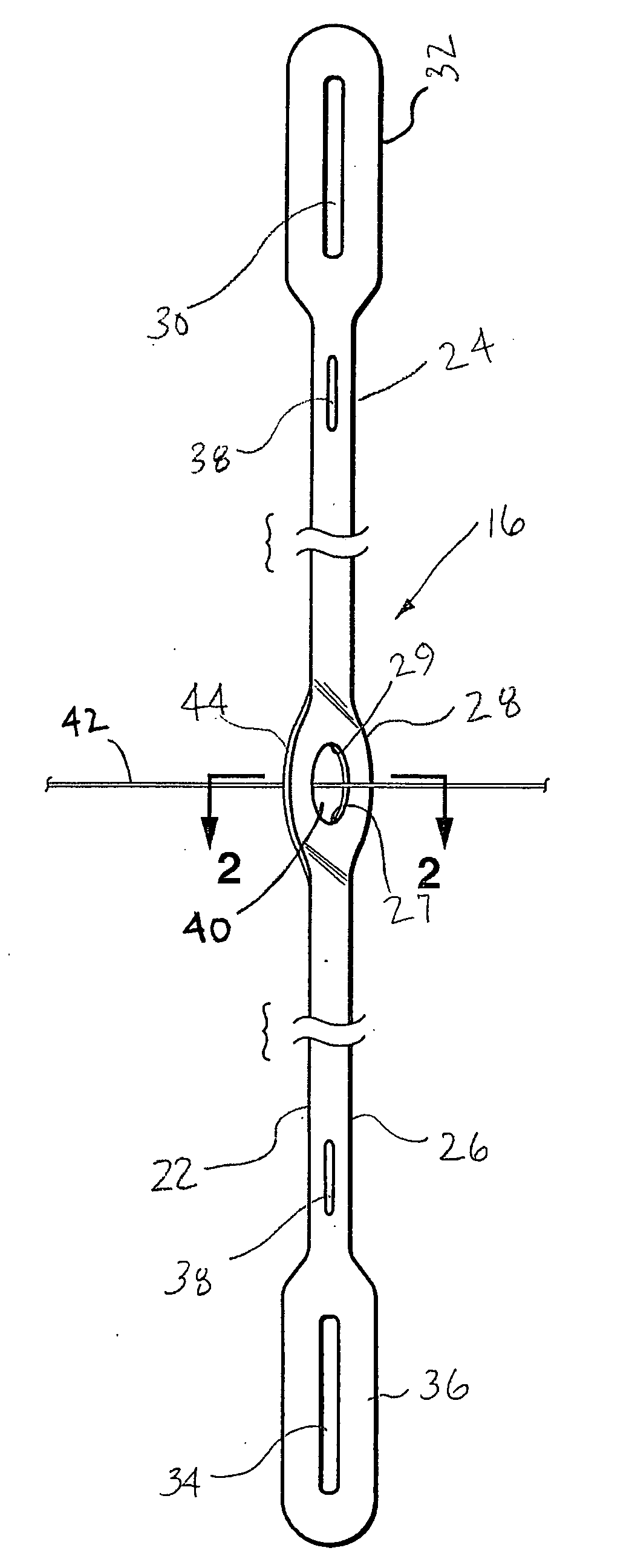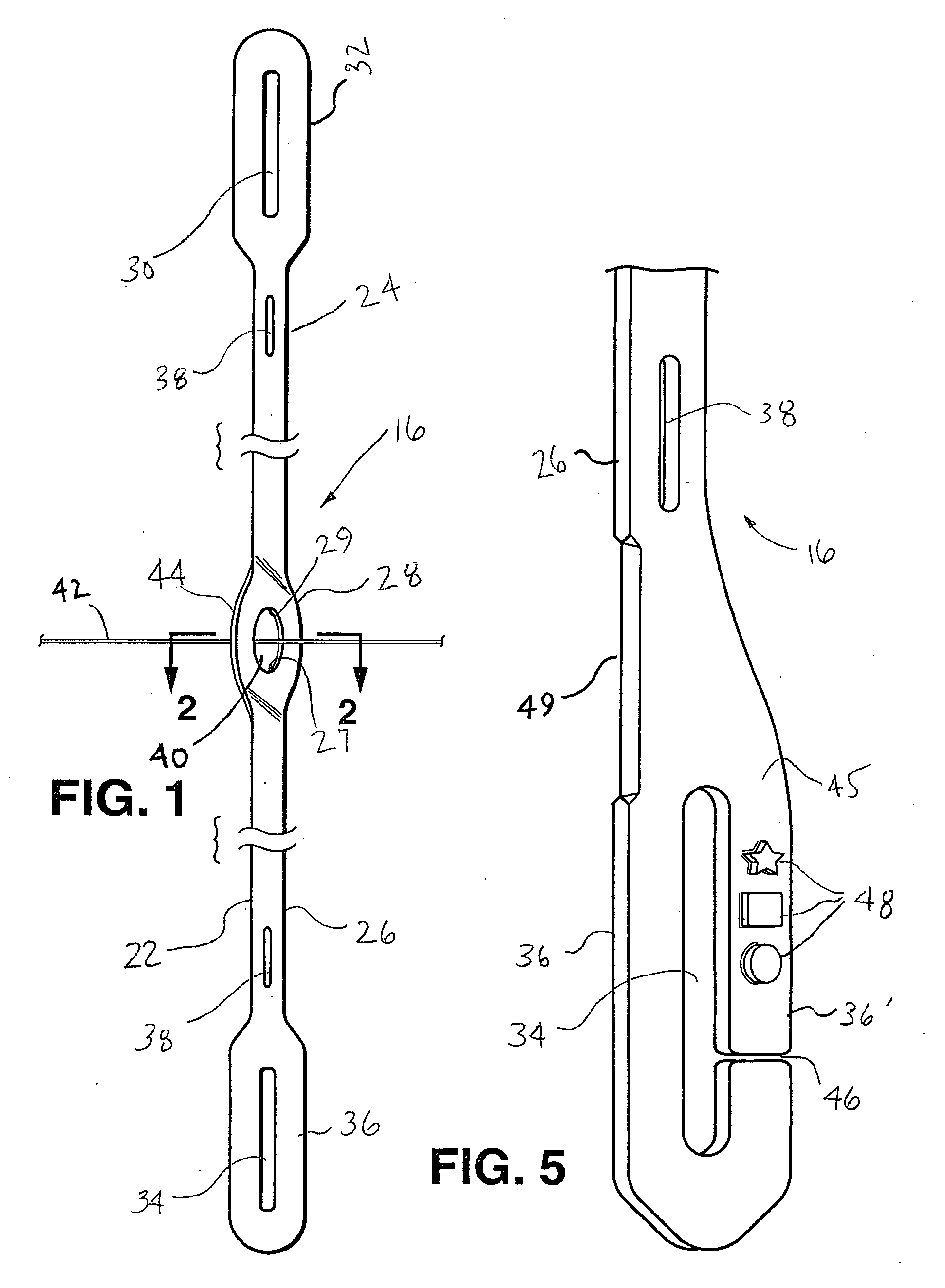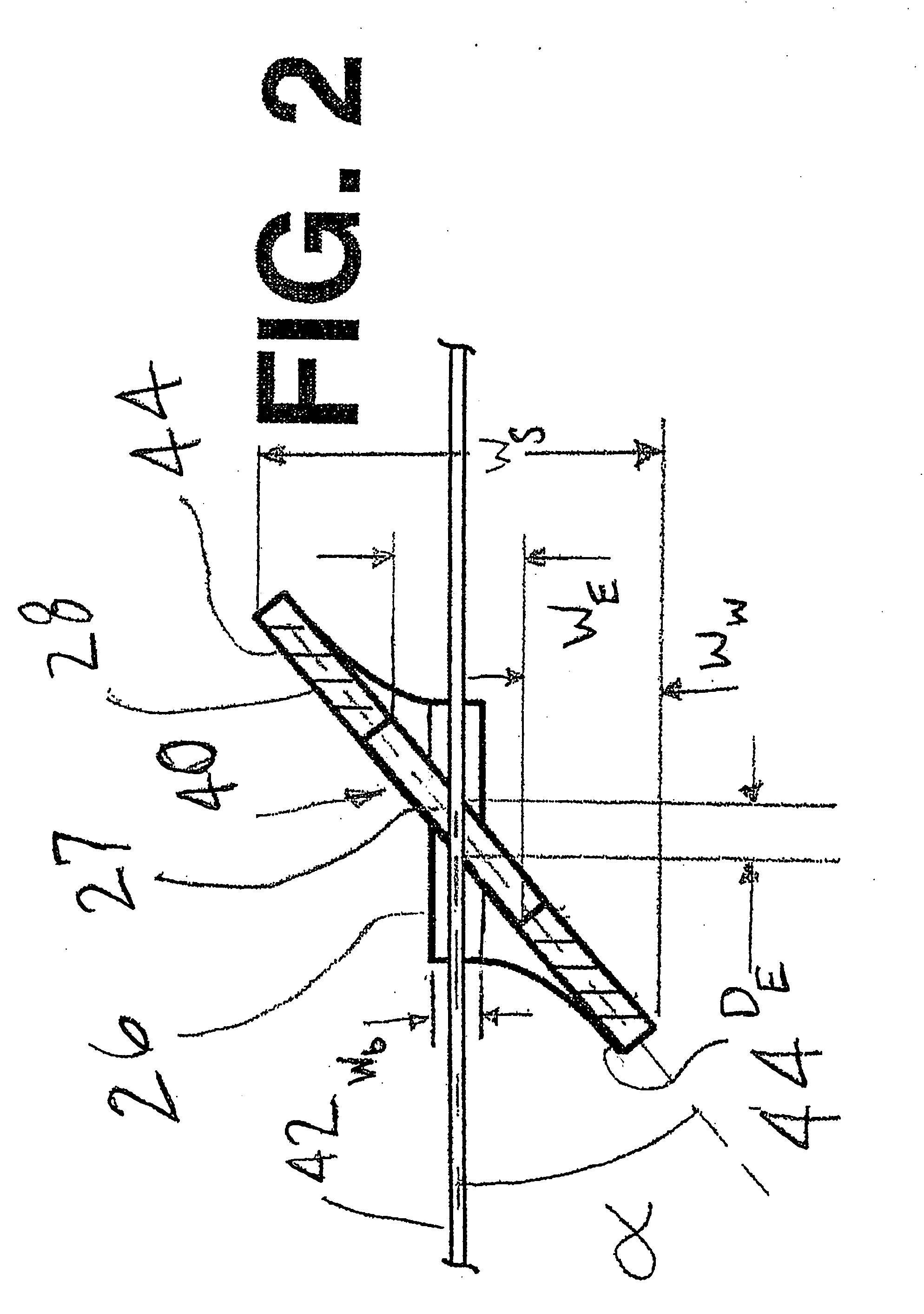Plastic heddle
a plastic heddle and heddle technology, applied in the field of plastic heddles, can solve the problems of limiting the configuration of the heddle, increasing the cost of the heddle, and heddles made from such plastics are more fragile than the metal heddles, and achieves the effects of high rigidity, strength, and durability
- Summary
- Abstract
- Description
- Claims
- Application Information
AI Technical Summary
Benefits of technology
Problems solved by technology
Method used
Image
Examples
Embodiment Construction
[0030] Reference will now be made in detail to the presently preferred embodiments of the invention, one or more examples of which are illustrated in the accompanying drawings. Each example is provided by way of explanation of the invention, which is not restricted to the specifics of the example. In fact, it will be apparent to those skilled in the art that various modifications and variations can be made in the present invention without departing from the scope of spirit of the invention. For instance, features illustrated or described as part of one embodiment, can be used in another embodiment to yield a still further another embodiment. Thus, it is intended that the present invention cover such modifications and variations as come within the scope of the appended claims and their equivalents. The same numerals are assigned to the same components throughout the drawings and description.
[0031]FIG. 8 illustrates a harness frame for use within a weaving machine. In general, harnes...
PUM
 Login to View More
Login to View More Abstract
Description
Claims
Application Information
 Login to View More
Login to View More - R&D
- Intellectual Property
- Life Sciences
- Materials
- Tech Scout
- Unparalleled Data Quality
- Higher Quality Content
- 60% Fewer Hallucinations
Browse by: Latest US Patents, China's latest patents, Technical Efficacy Thesaurus, Application Domain, Technology Topic, Popular Technical Reports.
© 2025 PatSnap. All rights reserved.Legal|Privacy policy|Modern Slavery Act Transparency Statement|Sitemap|About US| Contact US: help@patsnap.com



